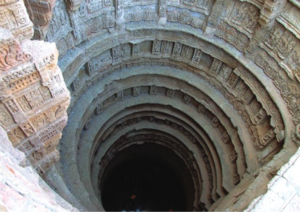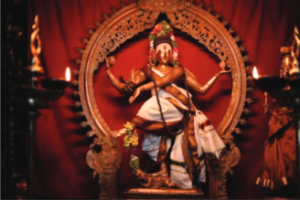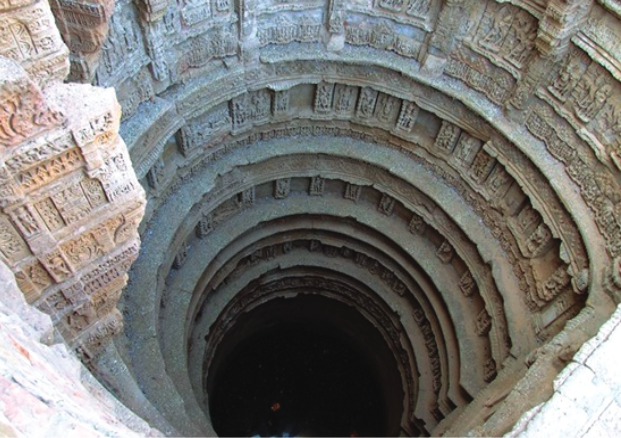With India being home to some very ancient heritage structures, Nandini Rao argues it won’t be wrong to say that the country’s rich history and heritage is closely intertwined with nature and its elements, so much so that many such practices and designs are still used today and adopted for contemporary use, in architecture, landscaping, design, construction, etc.

Rani ki Vav (The Queen`s Stepwell) in Patan, Gujarat — one of the largest and finest example of stepwell architecture
In India, some of the most ancient heritage structures and elements have incorporated elements of nature in concept, construction, design and sustenance. Nature and sustainability, as we know now, have always been at the core of India’s rich heritage and seen in various forms through history.
Heritage buildings in India have traditionally been environment friendly and heavily dependent on natural systems creating sustainable spaces and structures. Additionally, closer study of structures has revealed that they incorporated sustainable practices and resource management.
Among almost all ancient cultures, including in India, peaceful coexistence with nature and other living beings has been integral and is evident from the practices, folklores and scriptures.
It won’t be wrong to say that India’s rich history and heritage is closely intertwined with nature and its elements, so much so that many such practices and designs are still used today, adopted for contemporary use, in architecture, landscaping, design, construction, etc.
Planning spaces, resources
The ancient cities and settlements in India such as those of the Indus Valley Civilisation discovered in Harappa, Dholavira and Lothal and elsewhere such as in Nalanda, Jaipur, Patan, etc. demonstrated high level of town planning and natural resources management. Not only were these cities planned in sync with the environment, but they were also designed in a manner that utilised natural resources in the most optimal and sustainable fashion.
For example, the construction of roads in a straight pattern here meant the adjoining structures and building received maximum wind or air and the sun. Most modern-day structures are environment unfriendly, unsustainable and energy intensive. With new-found awareness on sustainability, city planners and architects are taking cues from ancient Indian architecture and heritage sites. In fact, most water conservation techniques used earlier can be practically and easily implemented even today.
Water is essential for human survival. Provisions for water harvesting, conservation and management too have been found in almost all ancient cities. Water has also been very integral to holy sites and places of worship.
In almost all the ancient cities in India such as Lothal, Dholavira, Kalibangan, Banawali, etc., one can see the understanding and implementation of water management system. Excavations found reservoirs, tanks, interconnected bodies, wells, dams and docks. Indus Valley Civilisation people were also among the first to utilise ground water.
More recently, in Gujarat, for example, 11th century Rani-ki-Vav stepwells situated in the town of Patan, demonstrate how water conservation was so important for ancient cultures. UNESCO recognised Rani-ki-Vav as an exceptional example of technological development in utilising ground water resources and of water management system. The intricately-designed stepwells are seven storied and laden with ornamented panels of sculptures representing the height of the Maru-Gurjara style.
Similarly, the Abhaneri Vav or Chand Baori in Rajasthan located about 95 km from Jaipur in Abhaneri Village, Dausa is a complex structure of steps, beautifully designed and carved, around the water tank at the bottom. The structure, built by King Chanda of the Nikumbha Dynasty between 800 and 900 AD, is part of the Harshat Mata Temple and considered the deepest stepwell in the world – there are more than 3,500 narrow steps that look like an illusion run about 13 stories deep. The architectural marvel works conserves water, aids in restoring groundwater levels and provides a ‘cool’ shelter as the bottom of the stepwells is about six degrees cooler than the top.
Sustainable living
Structures and buildings in ancient India were not only aesthetically designed but also served strategic purposes. They were also designed to ensure that there was maximum utilisation of natural resources.
The Hawa Mahal, for example, there are smaller openings on the outside of the structure for cooler air. The spaces on the backside i.e., behind the screen, were used for viewing processions and events by the women of the royal family. These functional spaces also served as cooler pockets protecting them from the strong sun and hot air.
Other structures and spaces such as corridors, verandahs, windows, balconies, overhangings, gardens, ponds, jhulas, jharokhas, etc. were also heavily used to control the ambience and facilitate passage of nature in a manner conducive and amenable. This stands in sharp contrast to urban architectural patterns that confabulate and pontificate reams on natural processes yet fail drastically to provide viable solutions.
The one mistake that is regularly made is the blind adoption of modern technology specially from the West. For example, the use of air conditioning is primarily a Western concept triggered by designs, colours and products that aren’t Indian. The use of natural colours, local material and adherence to traditional and scientifically-proven practices like Vaastu go a long way in providing sustainable solutions to modern-day needs.
Elements of nature
Hinduism is very close to nature and its elements. Mythology and scriptures are ripe with tales and legends of humans worshipping trees, mountains, rivers, animals and birds. Tribal culture also revers and worships the many elements of nature.

Chidambaram Nataraja Temple, located in Chidambaram (Tamil Nadu) is dedicated to Nataraja – the dancing form of Shiva
Ancient Indian heritage comprises many temples, caves and structures that are devoted to nature or have incorporated its elements in one way or another. This can be seen in their design, architecture, carving even legends associated with these structures and places.
One of the most prominent symbols of Indian heritage, the Konark Sun Temple situated in Odisha is a popular tourist destination and an example of magnificent architectural design and construction. The temple, situated in Puri, is dedicated to Surya Dev or the Sun God.
The temple, also known as Black Pagoda, Arka khetra, Padma Khetra, was built by King Narasimhadeva I of Eastern Ganga dynasty in 1250 AD and took 12 years to complete. The king worshipped the Sun God ‘Surya’ and the temple was considered his chariot. So, the temple was designed as a 30-metre high heavily-decorated chariot on 24 wheels, each about ten feet in diameter, drawn by seven horses. Among the many designs and motifs are those of animals and foliage around the base of the temple.
In South India, there are five temples dedicated to Lord Shiva, called the Pancha Bhoota Sthalam (pancha means five, bhoota means element and sthalam means place). Each represents a manifestation of the five elements of nature – Earth, Fire, Air, Water and Ether. Four of these are located in Tamil Nadu and one in Andhra Pradesh.
In Ekambareswarar Temple in Kanchipuram (Tamil Nadu), Shiva is worshipped as Ekambareswarar or Ekambaranathar in the form of Prithvi or Bhumi Lingam representing Earth. Jambukeshwarar Temple in Thiruvanaikaval or Thiruvanaikaval Paadal Petra Sthalam near Trichy (Tamil Nadu) has Varuna Lingam or Jambu Lingam representing Water. In Arunachaleswara Temple in Thiruvannamalai (Tamil Nadu), Shiva is worshiped as Arunachalesvara or Annamalaiyar, where his idol is referred to as Agni Lingam or Jyothi Lingam representing Fire.
Thillai Nataraja Temple, also known as Chidambaram Nataraja Temple, located in Chidambaram (Tamil Nadu) is dedicated to Nataraja – the dancing form of Shiva – and the Indra Lingam or Akasha Lingam represents Ether. Srikalahasti temple in Kalahasthi (Andhra Pradesh) houses the Vayu Lingam representing Air.

